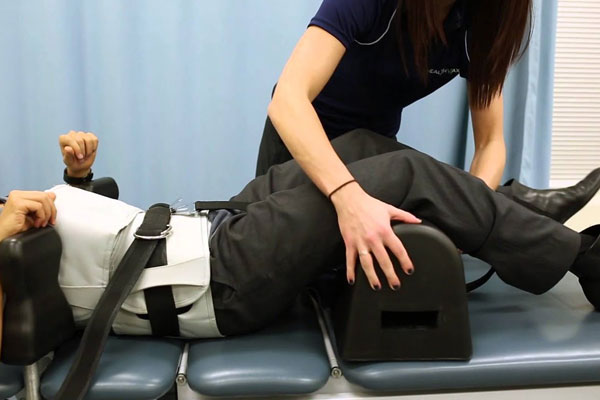WHAT IS TRACTION THERAPY?

WHAT ARE THE DIFFERENT TYPES OF TRACTION THERAPY?
Spinal traction therapy can be administered manually or mechanically, depending upon your need.
Manual Traction: In manual spinal traction, a physical therapist uses their hands to put people in a state of traction. Then they use manual force on the joints and muscles to widen the spaces between vertebrae. The period of traction generally doesn’t last very long. Manual traction sounds quite scary however it is a safe treatment option that can be effective for certain conditions.
Mechanical Traction: The specialized treatment technique of mechanical traction uses devices that work by stretching the spinal vertebrae and muscle. Mechanical traction allows for continuous or intermittent stretching on a traction table while combining heat, vibration, and/or massage. These tables can use computer-based systems to apply exact amounts and/or variations of pressure. Mechanical traction is, however, not appropriate for patients with serious bone conditions such as osteoporosis, osteomyelitis and bone cancer, or with heart disease and spinal cord diseases. It is also not appropriate for those with spinal fractures or arthritis. This type of treatment should only be considered following careful examination and diagnosis, and professionally supervised by a licensed physical therapist or doctor to ensure effectiveness and safety
